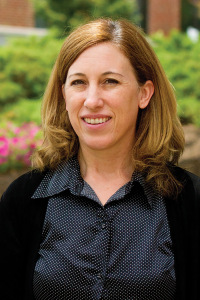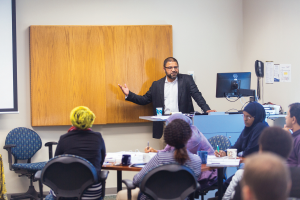 When Lisa Schirch was asked to teach a course on violent extremism at the 2016 Summer Peacebuilding Institute, the peacebuilding expert took an online tour to gather ideas from other universities.
When Lisa Schirch was asked to teach a course on violent extremism at the 2016 Summer Peacebuilding Institute, the peacebuilding expert took an online tour to gather ideas from other universities.
What she found was disappointing. Most courses offered at major universities, Schirch says, are oriented exclusively towards counter-terrorism, “focused on the use of police and military action.”
However, for this course titled “Peacebuilding Approaches to Violent Extremism,” Schirch wanted students to examine violent extremism through a wider set of perspectives.
“There is not one cause of or cure for violent extremism,” Schirch says. Using the metaphor of bacteria growing in a petri dish, she notes: “We have to think of violent extremism in its full context. When you have corruption in the government, poverty, rapid changes caused by climate change, the media covering and glorifying violent extremism and making people famous for doing it, and when there’s religious extremism as well, all these factors are the ecology in the petri dish that enable violent extremism to grow. And you can’t stop there. Different responses to violent extremism, such as the use of drone bombs, cause a cascade of other reactions and problems, all of which contribute to whether the extremism continues, escalates, lessens or ends.”
Even before she had determined her curriculum, the course filled quickly, eventually bringing together 26 SPI participants from 13 different countries. Their experiences varied widely, from Al Shabaab to Boko Haraam, from Muslim and Jewish religious terrorists and Daesh (ISIS) to radical Buddhist nationalists in Myanmar and White supremacists in the U.S.

Mornings were spent gaining basic understandings: exploring definitions of violent extremism, which vary in different contexts; looking at psychological, social, political, economic and religious factors contributing to radicalization; community resilience; responses to violent extremism; and legal contexts.
Legal frameworks often impede peacebuilding responses to violent extremism, Schirch says. “Peacebuilding is about reaching out and engaging people with extremist beliefs. But counterterrorism laws prevent us from teaching negotiation to people affiliated with extremist groups.”
Two guest speakers addressed violent extremism in the United States, a topic of special interest to the students considering recent political rhetoric. Robbie Abdelhoq, MA ’12, a doctoral candidate at the University of Toledo in Ohio, spoke about the harmful impact of FBI and police initiatives within the Muslim community. Adnan Ansari, program director at the Northern Virginia-based independently funded think-tank Muflehan, talked about their consulting work in countering violent extremism, which includes, among other efforts, digital intervention and clergy/leader training.
In the afternoons, students participated in role-play scenarios with case studies from Schirch’s recently published Human Security: A Civil-Military-Police Curriculum. They also analyzed a specific violent extremism movement of their choice and provided a briefing on the final day.
Schirch frequently participates in policy conversations about violent extremism in Washington, D.C., London and Geneva. But she believes the one-week course at EMU provides a one-of-a-kind opportunity for cross-cultural analysis of violent extremism.
“EMU may be the only place where you have people from this many different countries sharing and learning from each other about how violent extremism takes place in their country, looking at how it’s both unique and similar,” she said. “With this comparative lens, you start seeing interesting patterns and distinctions in how the government responds in different ways and how some governments have more success than others in countering it.”
The course will be offered again during SPI 2017.